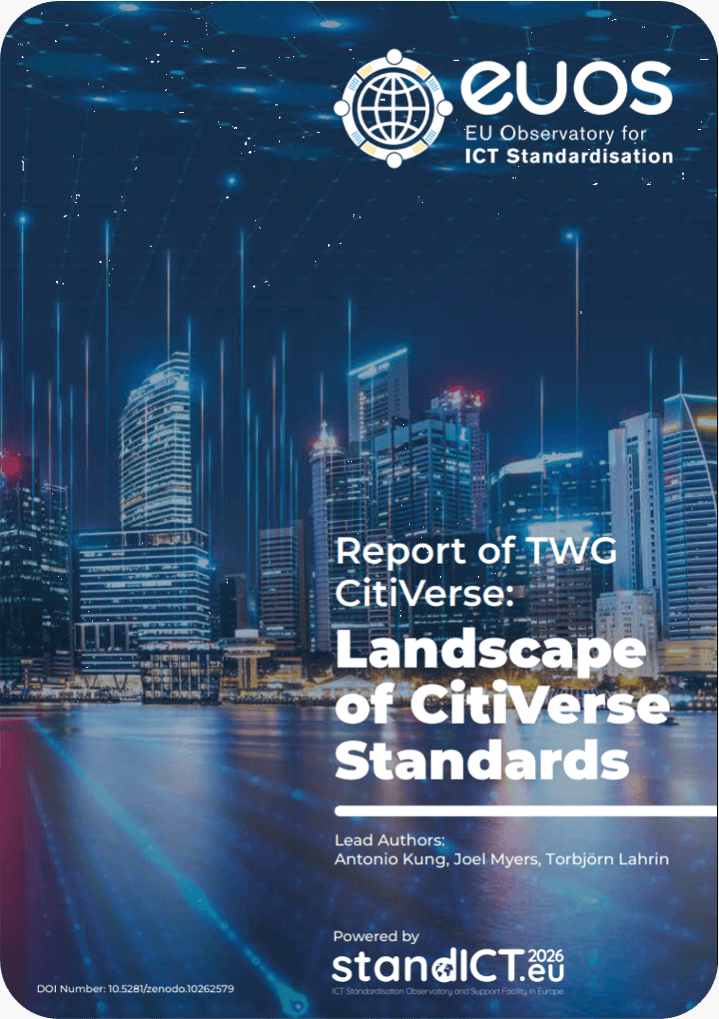The Standardisation Landscape Report for CitiVerse, published in December 2023, primarily focuses on standards to consider when constructing CitiVerse or developing further standards for CitiVerse. Standards for various application areas, utilising the possibilities with CitiVerse, will eventually be taken into consideration in later versions of this document but are not included for now.
CitiVerse has a lot in common with Metaverse, sharing many of its challenges with Metaverse. Today there are however no precise definitions of Metaverse, nor of CitiVerse. Regardless, there is a need to understand the specific demands and challenges we encounter when a digital 3D world is based on and are a copy of the real world. For that reason, in this document, let’s consider CitiVerse as being a copy of the social physical real world. Let’s use the term Metaverse for a virtual 3D world more freely designed and NOT being a copy of a specific physical area in the real world or even look like something from the real world.
Regardless of how we choose to interpret the term CitiVerse and Metaverse, many of the standards and techniques used for Metaverse will be relevant and useful for CitiVerses as well. These include standards for visualisation and computer graphics and standards for extended reality (AR, VR, MR). Methods to create and manage user and computer-controlled avatars, as well as user interaction by wearables, haptics and other means, will probably be the same in these worlds too. Ethical, social, and legal considerations and concepts, such as privacy by design, moral design processes and humancentred design often overlap in both CitiVerses and Metaverses. Infrastructure capabilities such as AI, digital twins, and characteristics including accessibility, inclusion, trust and immersiveness need to be dealt with in both worlds. And so on.
